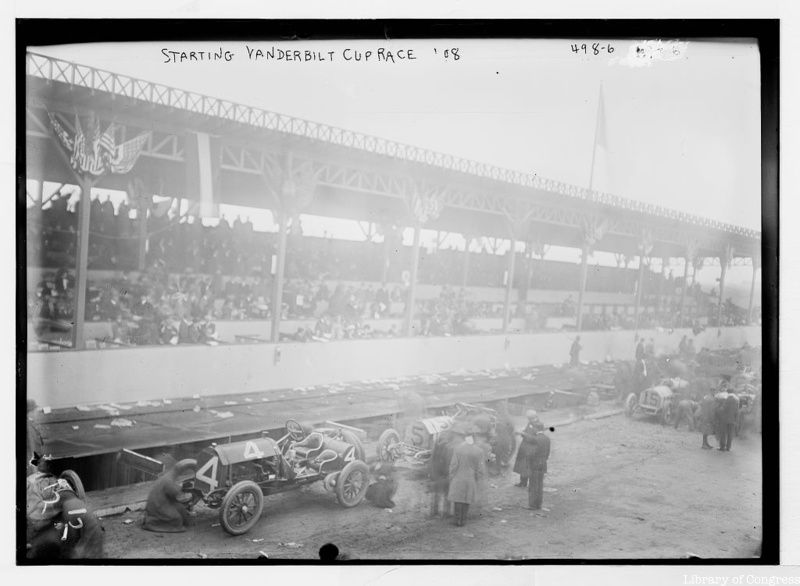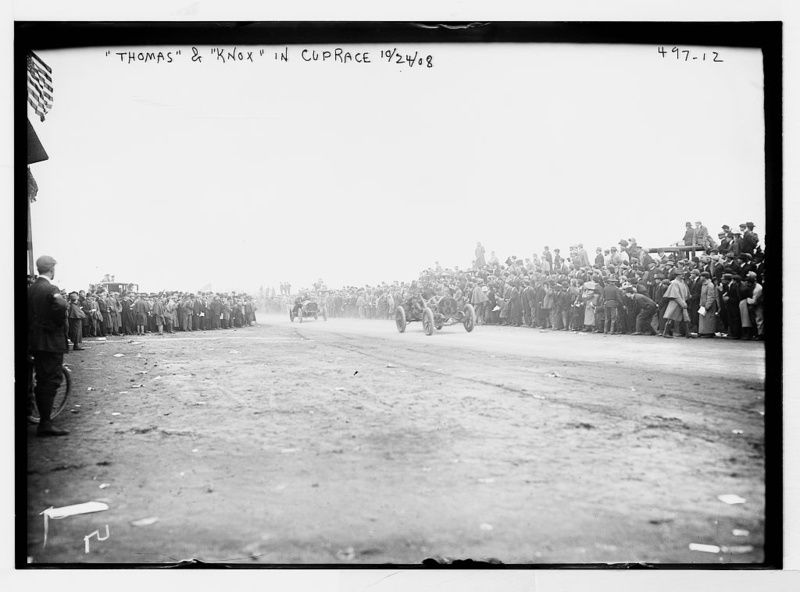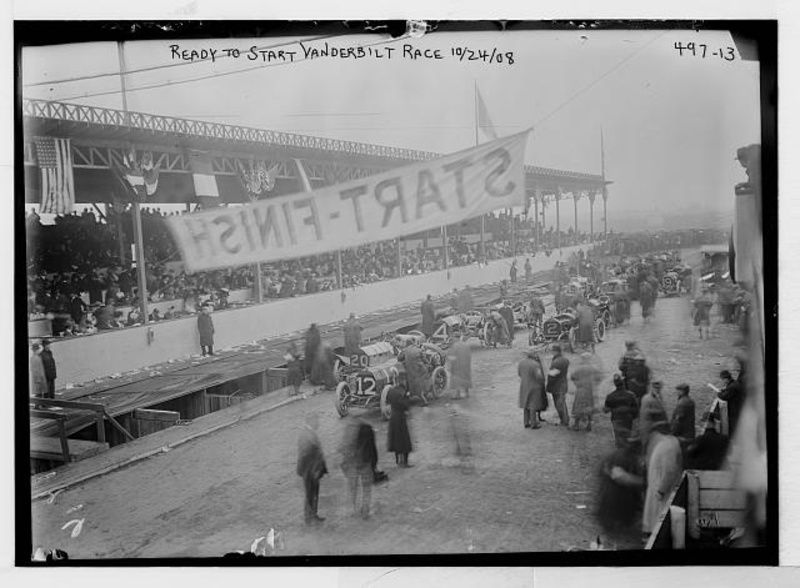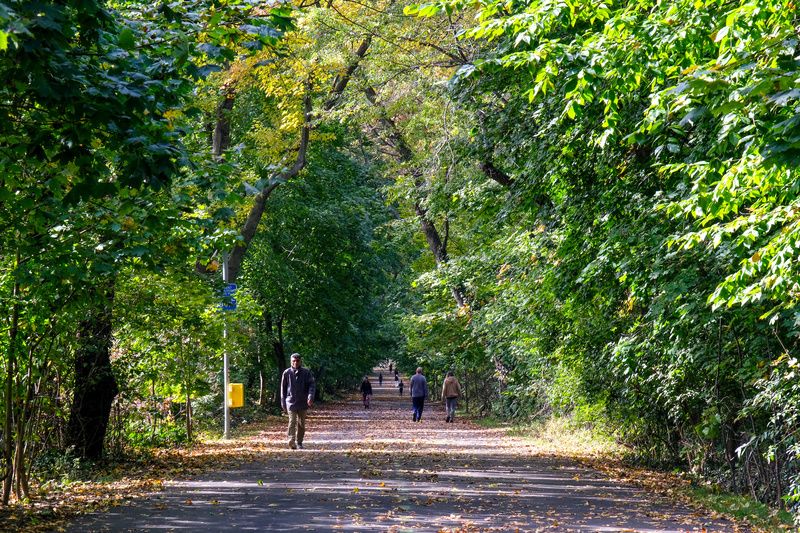Vintage 1970s Photos Show Lost Sites of NYC's Lower East Side
A quest to find his grandmother's birthplace led Richard Marc Sakols on a mission to capture his changing neighborhood on film.


Vanderbilt Parkway, also known as the Long Island Motor Parkway, was the country’s first long-distance, limited-access, concrete highway created specifically for automobiles, The parkway started as the pet project of a Vanderbilt descendant – a way to indulge his automobile racing hobby – was used by rumrummers during prohibition, and is now an NYC Park! Read on to learn about the evolution of this historic road.

Railroad mogul and financier William K. Vanderbilt was enthralled by the automobile. His participation in the Grand Prix cross-country races in Europe inspired him to craft his own long-distance road race on Long Island where he would later build his grand estate, Eagle’s Nest. The Vanderbilt Cup Races were the first international automobile races to take place in the United States. Drivers readied their engines and zipped from the starting line for the first time in 1904. For the first few years, the races were driven on a 25-mile route composed of local roads across Nassau County. This continued until a fatal crash occurred. A spectator was killed in 1906 and Vanderbilt decided it was time to make the switch from public roads to a private parkway.
Construction on the Vanderbilt Parkway began on June 6, 1908. The landscaped road would eventually run for 47 miles from eastern Queens to Lake Ronkonkoma. Vanderbilt’s road became the first ever long-distance, reinforced concrete highway made especially for cars. It was also the first to incorporate overpasses and bridges (60 upon completion) to remove cross traffic and made use of curves to help with safety and speed.

The Vanderbilt Cup Race moved to Vanderbilt Parkway in 1908 when the first section of the road was complete. This section consisted of less than 10 miles that ran from Westbury to Bethpage. The races ran here until 1910 when three spectators were killed and twenty others injured, effectively putting an end to road racing on Long Island.
The parkway opened fully to the public in 1912. It was primarily used by the elite of New York to travel between their city dwellings and their luxurious Long Island estates. It was also a staple for bootleggers to use to avoid the police during prohibition. Illegal booze was dropped off via speedy boats on the shores of Long Island, then picked up by cars and delivered to the speakeasies of New York City. The parkway soon garnered the nickname “Rumrunner’s Road.”

Twelve “toll lodges” lined the parkway, charging $2 to pass. The lodges were designed by John Russell Pope and included living accommodations for the toll collectors. Today, only five lodges still exist. The Mineola Lodge is now a private home, while the Garden City lodge serves as the headquarters of the Garden City Chamber of Commerce.
In 1929, Vanderbilt offered to sell his parkway to Robert Moses, then president of the Long Island State Park Commission. Moses was working on the construction of the Northern State Parkway through Nassau County and found Vanderbilt’s narrow road too outdated. To compete with the Northern State, Vanderbilt reduced the tolls on his parkway to just forty cents. By 1937, the parkway was no longer solvent. It shut down in 1938 and was deeded to the towns through which it ran. Moses quickly turned the Queens segment of the parkway into the “Queens Bicycle Path.” Throughout Nassau and Suffolk counties, parts of the historic parkway have been incorporated into local roads while other sections were sold off to developers or utility companies.

In 1986, a section of the parkway that runs through Alley Pond and Cunningham Park was revamped and then incorporated into the Brooklyn-Queens Greenway in 1993. In 2002, a 2.5-mile-long section of the parkway was listed on the New York State and National Registers of Historic Places.
In November 2023, NYC Parks cut the ribbon on another rehabilitation project at Vanderbilt Motor Parkway. After two phases of reconstruction, the parkway park reopened. New asphalt pavement was added to create a smoother cycling surface, draining issues were fixed by elevating the ground level, guide rails were installed, and new greenery was planted to enhance the appearance. The project provides for a more relaxing space for pedestrians and cyclists for years to come.

Phase one of the project, finished in September 2021, was dedicated to the path from Winchester Boulevard by the Alley Pond Park entrance to Springfield Boulevard. Phase two ran from July 2022 to this past November at Springfield Boulevard to 199th Street and north of 67th Avenue.
Next, check out 10 Secrets of the West Side Highway and A 1948 Road Race Ran Through This Quiet Upstate Town
Subscribe to our newsletter